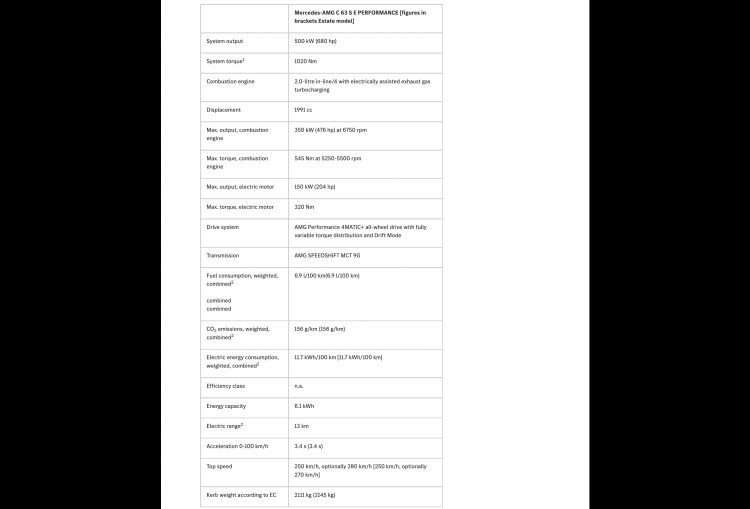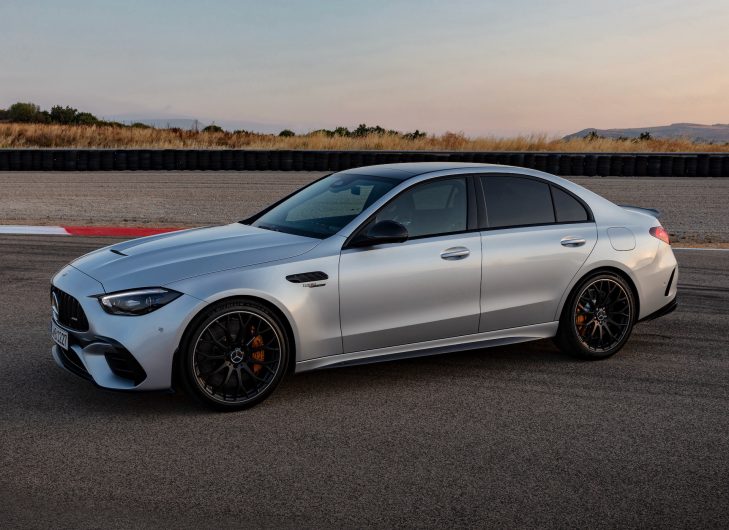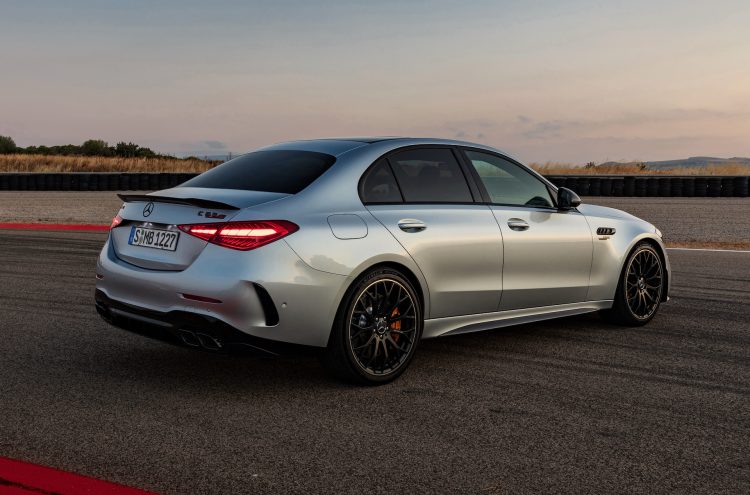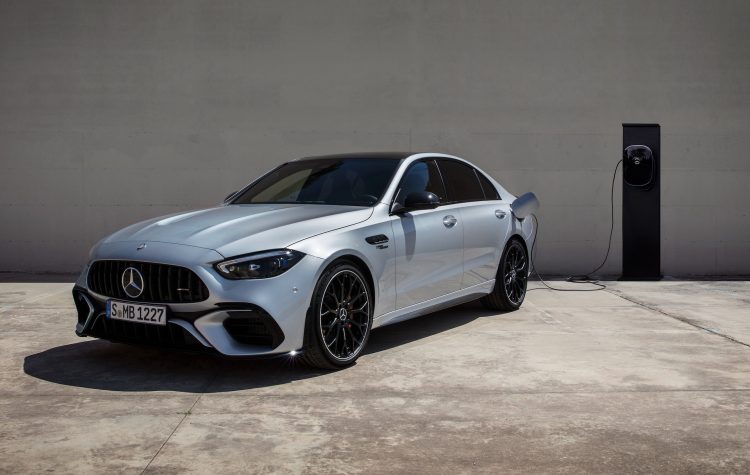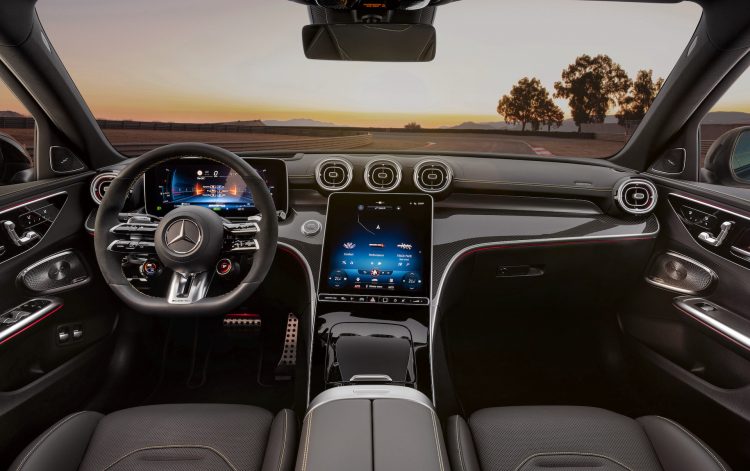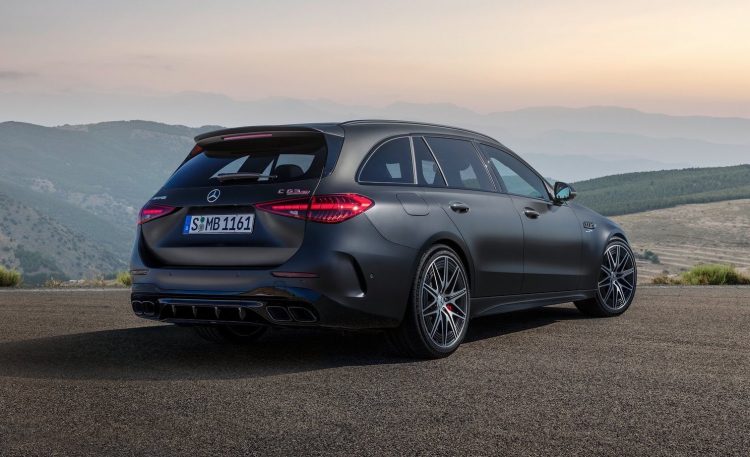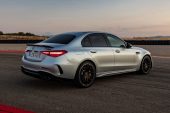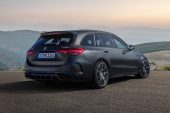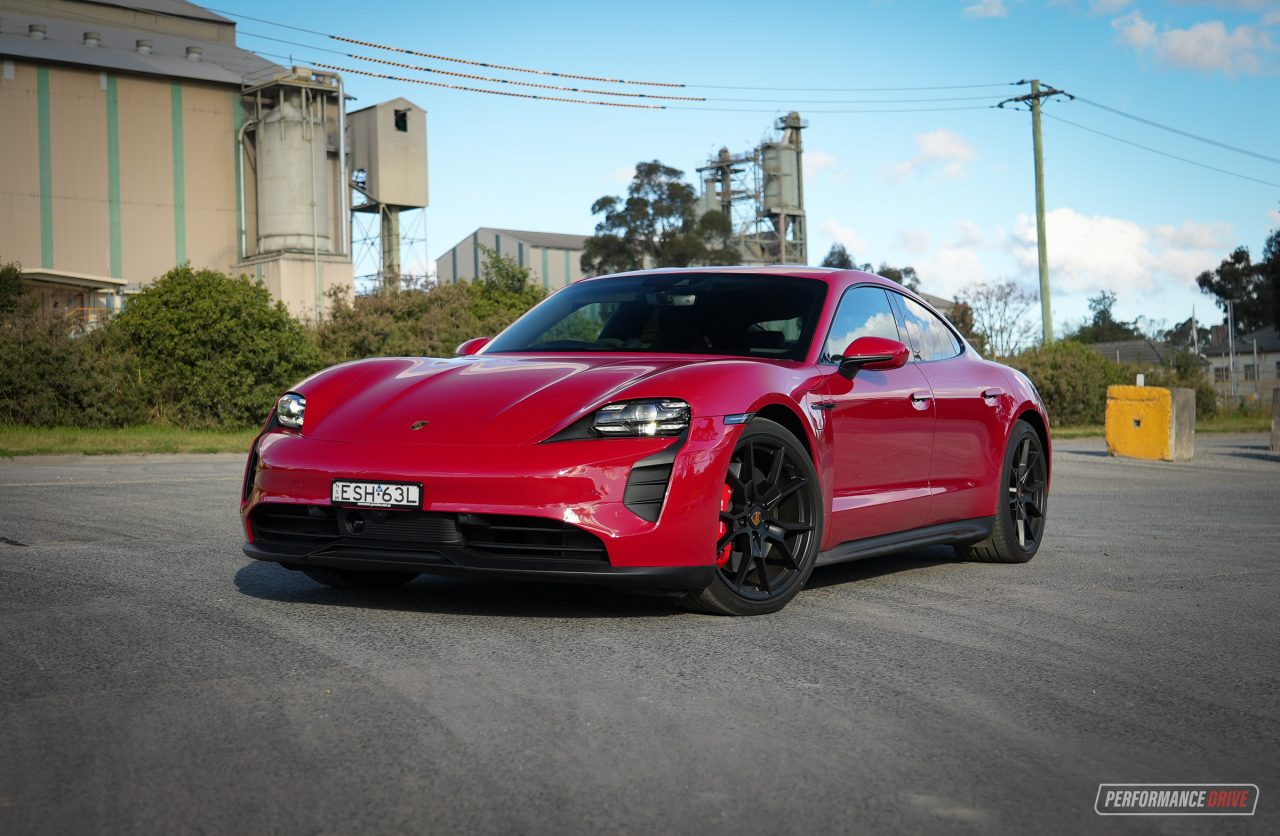It’s one of the most hotly-anticipated debuts of the last few years. The all-new 2023 Mercedes-AMG C 63 S E Performance. And here it is.
Firstly, the engine. As we already know the famed 4.0-litre twin-turbo V8 has been dropped in favour of a brand new four-cylinder hybrid setup. It comprises of a 2.0-litre turbo four-cylinder, based on the M139 unit from the A 45 S super hatch.
Only here the engine itself is tweaked and features an electric-assisted turbocharger and produces 350kW alone. It is the most powerful production four-cylinder engine ever made. The engine is mounted longitudinally, unlike in the A 45, and sends power to the front and rear axles.
On top of that, there’s an electric motor mounted at the rear axle featuring a limited-slip differential and a two-speed transmission. This element produces up to 150kW, helping to provide an overall combined output of 500kW and 1020Nm. That’s a shipload more than the outgoing 375kW/700Nm V8.
So, as you might assume, performance is truly insane. Mercedes-AMG says the new model can cover the 0-100km/h dash in just 3.4 seconds, and the top speed is electronically limited to 280km/h with the optional AMG Drivers Package.
Unlike the outgoing V8 model, this new version is quite economical, too. The official average fuel consumption is just 6.9L/100km, while the official average emissions output is 156g/km. The car can also drive on electric power alone for a range of 13km, and it offers plug-in charging capability.
There is a cost to all of this tech, however, as the kerb weight is listed at a hefty 2111kg. That makes it the heaviest C 63 ever. But fear not as the gurus at AMG have infused plenty of wizardry and expertise into the handling and steering to ensure it lives up to the nameplate’s pedigree.
As standard the new model comes with rear-axle steering for the first time, dialling in up to 2.5 degrees of steering angle in the opposite direction to the front at speeds up to 100km/h. This helps with agility and low-speed driving in confined conditions, such as car parks. Above that speed the rear axle steers in the same direction to the front, up to 0.7 degrees, aiding stability and cornering capability.
Drivers also have a range of driving modes to choose from, including Comfort, Electric, Sport, Sport+, and Race, and others. These alter various parameters, including the AMG Ride Control adaptive suspension. There’s also a new Drift mode thanks to the fully variable all-wheel drive system.
The styling of the new model goes for a typically reserved yet sporty character, with discreet front and rear spoilers and a new AMG badge on the front instead of a traditional pointed star emblem. A new side vent in the front guards signifies its credibility, while 19-inch light-alloy wheels top it off, featuring staggered tyre widths. There’s also optional 20-inch items, including forged wheels.
Inside, the C 63 S E Performance is based on the latest C-Class and so it comes with the company’s latest MBUX infotainment suite, complete with a big tablet-style main screen and fully digital instrument cluster with configurable display themes. Luxurious leather wraps around the cradling sports seats, including in the back.
Mercedes-AMG will be offering the new model in sedan and Estate wagon formats, although specific market availability is yet to be outlined. Philipp Schiemer, chairman of the board of management of Mercedes-AMG, spoke about the new model in a statement, saying:
“With the C 63 S E Performance, we are opening a new chapter in the history of our brand. Even 55 years after our company was founded, we at AMG continue to show the boldness and the will to realise the creative, to deliver something special. The new C 63 in particular is a real game changer.”
You can check out the key specs in the table below (click on the image for a larger view):
